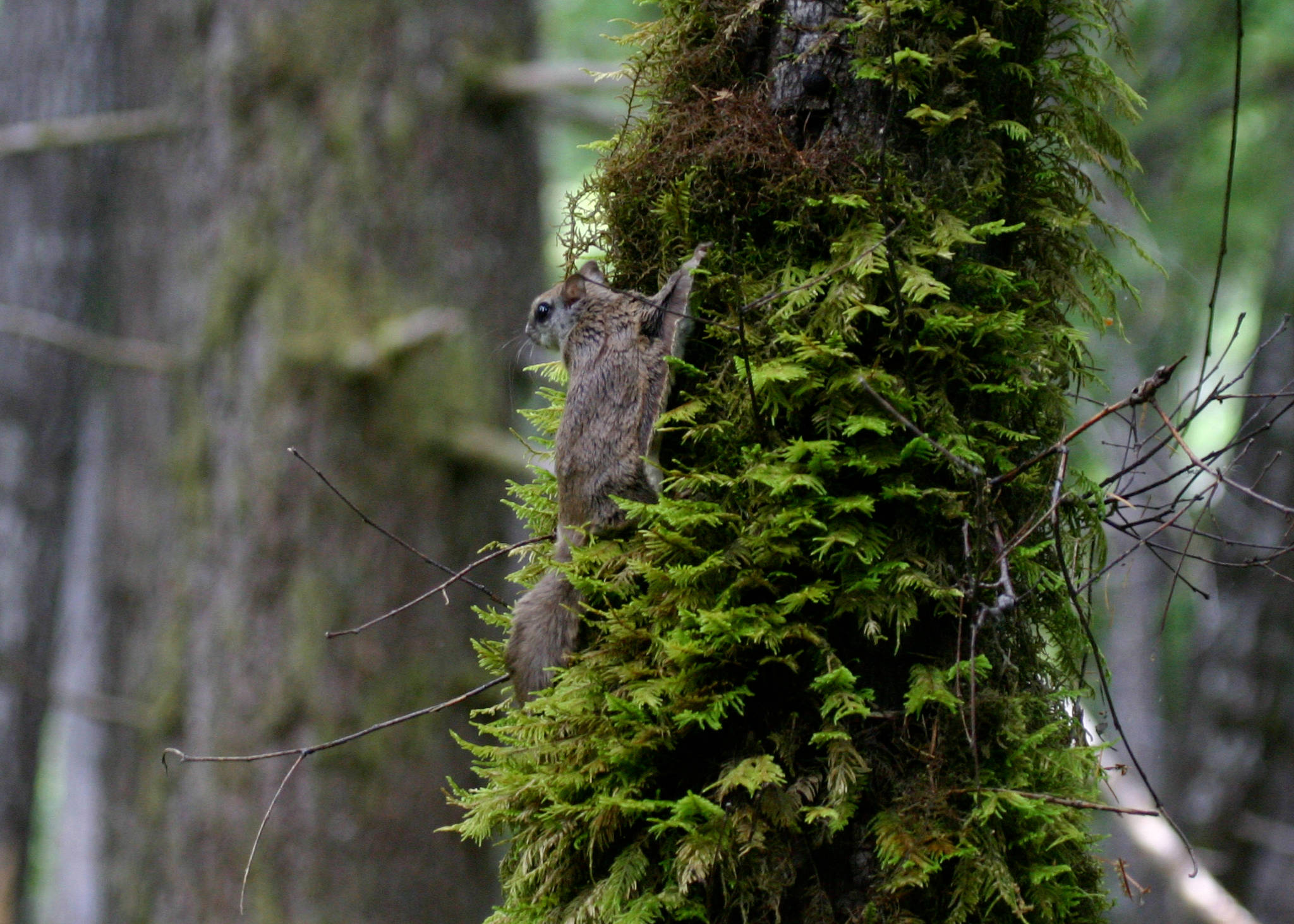Research by a University of Alaska Southeast professor published this week helped discover the existence of a new species of flying squirrel, one that has been hiding in plain sight for decades.
While working on her master’s degree at the University of Alaska Fairbanks 20 years ago, Allison Bidlack took museum specimens and DNA samples of flying squirrels in Southeast Alaska. It was DNA from those samples, coupled with satellite data from the Lower 48, that helped Bidlack and her six-person team discover the existence of a third species of flying squirrel, which they’ve dubbed Humboldt’s flying squirrel.
They released their findings in the May 30 issue of the Journal of Mammalogy, according to a Thursday press release from the Alaska Coastal Rainforest Center. In a Friday phone interview with the Empire, Bidlack said that to the naked eye the genetically-distinct squirrel doesn’t appear any different than other flying squirrel species.
“If you saw one in the wild you wouldn’t have a second thought about it, (but) if you laid out the museum skins next to each other you would see that the Humboldt are quite a bit smaller and darker,” Bidlack said.
Flying squirrels don’t actually fly, but glide from tree to tree using skin flaps that extend between their feet. The gliding squirrels can be found over a large swath of Canada, Alaska and in northern parts of the United States.
Previously, scientists considered flying squirrels to be of two different species: the northern flying squirrel and the southern flying squirrel. Those species don’t interbreed in the wild.
The northern flying squirrel is known to have two distinct populations, a “Continental” lineage and a more isolated “Pacific Coastal” lineage. Bidlack and her team were able to show that two separate populations of northern flying squirrel actually don’t interbreed, even when they occupy the same habitat.
Using DNA analysis and satellite imagery, they found the Continental and Pacific populations weren’t swapping DNA, even when living in the same forests. That was the final piece to the puzzle in proving that the Humboldt flying squirrel indeed was a distinct species.
“It kind of happened in steps. We knew for at least five years ago that the genetic diversity was quite deep,” Bidlack said. “The thing that really cinched it is that squirrels that were caught in the same spot still showed genetic difference.”
Researchers believe there was only one species of flying squirrel in North America before the last ice age roughly 2 million years ago. It was then that spreading ice separated populations of flying squirrel in North America, leading pockets of squirrels to flee to “refugia” in warmer climes.
Separated for millennia, these pockets of squirrels gradually adapted to their new environments, taking on distinctive genetic traits that helped them survive.
“Separated by ice sheets and mountain ranges for a long time, you start to get specialization happening and you see this with all sort thing with many species,” Bidlack said. She said the Flicker woodpecker is a good example of this ice-age induced species creation.
After the last ice age, the three species — now too genetically diverse to interbreed and produce fertile offspring — came back in contact with one another. Since northern flying squirrel and Humboldt flying squirrel looked so similar, they were long considered one species.
Bidlack said the discovery has posed questions about how Humboldt flying squirrel compare to northern and southern flying squirrel, questions that will take time to answer.
“That’s a big open question because we didn’t know there were three species, so no one has really looked at that species yet,” Bidlack said.

